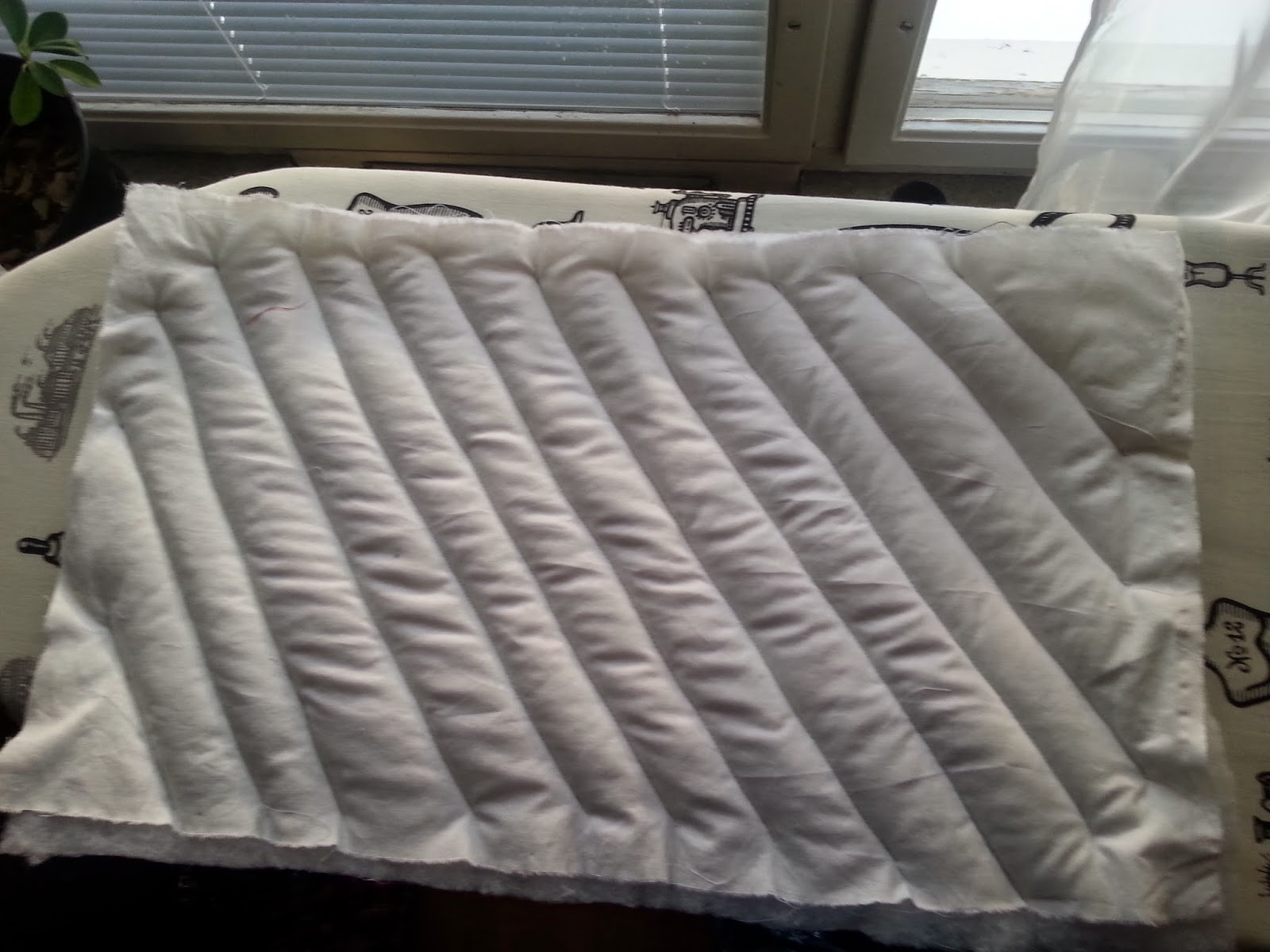I wanted to do something quick for the blue challenge. I had the remnants left from when I did my big revolutionary hat, and that is a wonderful cotton velvet and it being winter and all I felt that what I need is a muff. A blue muff would of course also go very well with the hat. I was a bit worried about the use of velvet though, since most muffs on fashion plates and also most reproduction muffs seemed to be made of silk or fur. A quick search made me very happy though. I found two example of paintings with velvet muffs, and not only velvet they are blue!
Now I generally concentrate on the later 18th century, when the muffs tended to be bigger, but smaller muffs are around throughout the century.
Now I'm not the first to make a muff, and I very much relied on the tutorials by Katherine C-G and Leimomi Oakes, in a way my muff is a mix of the two.
The first step was to make a muff base, with a muff base it would be easy to make loads of muff covers in the future if I feel like it. The muff base was constructed from cotton, a thin silk and two layers of batting.
As a pattern I used a muff that I have and love. As a student I was actually known for using this muff in the winter, then I got a job and bought a bike and it's hard to use a muff when cycling.
The base layer is simply the muff x 2 with added seam allowances. I cut out two layers of batting and a silk layer using the cotton as a pattern. My plan had been to cut up an old pillow and use the filling for stuffing the muff, but apparently I had already thrown it away. I also cut the silk layer about 2 cm bigger than the cotton layer.
At this time I also got a lot of assistance by Kurbits, one of my mother's two cats that I'm cat-sitting this week.
I quickly quilted the padding to the cotton layers, so that it wouldn't slide around. This is going to be on the inside, so I wasn't very careful with getting the quilting lines exactly straight and on equal distance from each other.
I cut off the padding from the seam allowances and sewed the silk lining to only the cotton layer.
I sewed the silk to three sides of the cotton/padding layer. As you can see the silk is bigger than the cotton, but when it's all turned to the right side the padding ends up between the layers and then the silk lining fits snuggly to the cotton/padding layer.
Then it was just a matter of turning the right sides out and sew the open sides together to form a tube. Tadah, I had a muff base.
For the outer layer I cut a rectangle a bit larger than the muff base.
I sewed two channels on the short sides and then sewed the long side together. Now here I did the mistake that made my muff a bit smaller than planned. The outer layer need to be a lot longer than the foundation, since it's going to be drawn together and form the short sides as well. Still I managed to get the muff foundation into the muff cover and close it with two sets of blue ribbon that I found in my stash.
I haven't trimmed the muff, I want to keep it fairly simple so that I can use it for a lot of different outfits, and a simple case of changing it up a bit would be to just change the ribbons to some other colour.
The Challenge: 2 - Blue
Fabric: 0,5 m cotton broadcloth, 0,5 m silk (habotai?), 0,75 m blue cotton velvet
Pattern: Made my own
Year: 18th century
Notions: Sewing thread, 1 m blue poly satin ribbon, 1 m of poly batting
How historically accurate is it? The fabrics are accurate, but the ribbon and batting are not. I also made it all by machine so I'd say 40%
Hours to complete: 1,5
First worn: Not yet
Total cost: It was all from stash, and most of it old enough that I can't remember what it cost when I bought it.
Future things: I would love if I can use the last of the remnants to make a cape, or rather capelet. I'm not sure that it's enough fabric left but I would love to have a matching hat, cape and muff. I will at least try and see what I can make out of it for the stash-busting challenge.











No comments:
Post a Comment